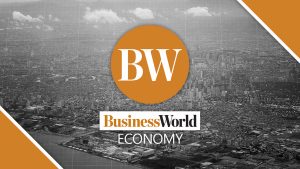Pace yourself during year-end crunch, says career coach

REQUIREMENTS that punctuate schedules at the end of the year can mean ringing in 2022 with additional stress. This, however, can be managed, said Caroline Ceniza-Levine, a career coach and founder of DreamCareerClub.com, a resource site on career and professional development.
“Year-end is a natural inflection point, so managers who didn’t plan ahead may find themselves pushing to meet objectives that they should have been focused on all year,” she told BusinessWorld in an e-mail.
Deadlines can be paced throughout the year, she advised, so work can ebb and flow between busy periods and periods of rest. Managers can also offer support during the year-end holidays by minimizing e-mails, and bringing in extra pairs of hands so team members can take the time off.
A raft of studies released this year show that people are tired and running on empty. Leaders can help employees avoid burnout at work by taking breaks themselves.
“Leaders should model that … you will not be judged by how late you stay or how early you come in, but rather by the results you produce,” said Ms. Ceniza-Levine.
Modeling this approach — plus penalizing managers who overwork their staff — is the only way burnout solutions will have real teeth to them, she added.
Burnout is classified by the World Health Organization (WHO) as a syndrome resulting from unmanaged workplace stress. This occupational phenomenon is characterized by three dimensions, as per WHO: feelings of energy depletion; increased mental distance from one’s job, or feelings of negativism related to it; and reduced professional efficacy.
It has less to do with expectations for hard work and high performance — and more to do with how someone is managed.
FEELING THE SYMPTOMS
An April survey by McKinsey & Company, a management consulting firm, found that almost half of those surveyed (49%) feel the symptoms of burnout. The New York-headquartered firm added that this number might be an underestimate, as employees who experience burnout are less likely to respond to survey requests.
A March survey by global job portal Indeed, meanwhile, found that more than two-thirds (67%) believe the pandemic has worsened employee burnout. It also found that more than half (53%) of work-from-home employees work more hours at home than in the office.
In its survey, Indeed advised employers to re-evaluate office perks, such as schedule flexibility.
“People may quit. People may get sick. Morale will diminish,” Ms. Ceniza-Levine said. “Burnout has measurable consequences to work quality, customer satisfaction and employee engagement — and therefore the company bottom line.”
BusinessWorld previously reported that 76% of Philippine employers plan to adjust their benefit programs in response to workplace changes caused by the pandemic, balancing the need for wellness programs to support workers against their cost, according to advisory firm Willis Towers Watson.
REST
Individuals can avoid burnout by taking breaks — throughout the day as well as over the course of the year — pacing their workload, and getting their manager and team to support them.
“Getting some rest is the best solution, so the question becomes how can you do that?” asked Ms. Ceniza-Levine.
Unplugging is one way. “Technology is helpful, but it can affect our well-being. It should improve life, not the opposite,” said Bernadette Nacario, country director of Google Philippines, citing the e-Conomy SEA 2020 report that showed Filipinos spent 5.2 hours a day on the internet at the height of quarantine last year — the highest across Southeast Asia.
Cleveland Clinic also suggested attaching work efforts to personal values. “Notice how your work makes something in the world, the culture, or in other people’s lives better,” the medical nonprofit said in a post. — Patricia B. Mirasol




